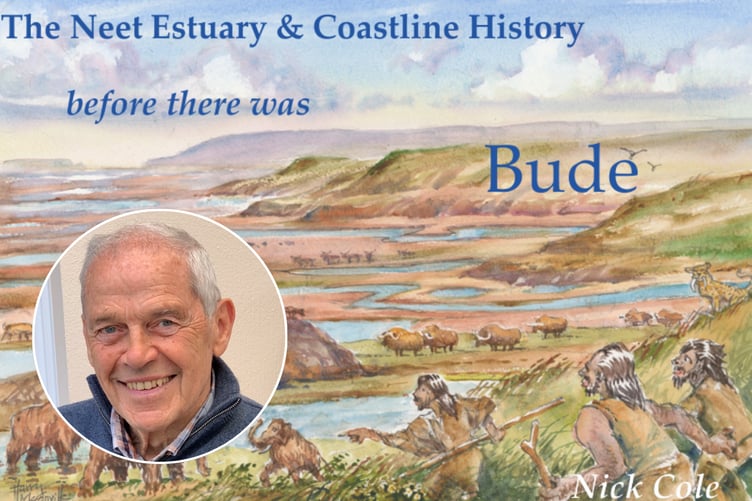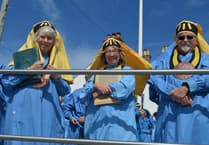A NEW book is providing a different perspective on Bude as it delves into hundreds of thousands of years of history.
Released this June, local author Nick Cole’s latest book, titled ‘The Neet Estuary & Coastline History... before there was BUDE’ tells the story of northeast Cornwall’s prehistory from a local perspective.
Although the focus is the Neet estuary of Bude and its Celtic Sea coastline, Nick believes that it is really the story of northeast Cornwall and the role that it played in creating the Cornwall of today, with its history of independence.
The book weaves its way from the last ice ages through the historical periods of the Mesolithic, Neolithic, Bronze Age, Iron Age, Saxon and Norman. Plus, tells the story of the Blanchminsters and other local families.
The book even has a dedicated section to explore the causes of climate change and how it affected patterns of early settlement thousands of years ago.
Speaking about the book and some of the history it explores, Nick said: “Northeast Cornwall was strategically placed, being on the watershed highway, north to south; at the point of the easiest crossing of the Tamar and land routes east to west and with the Neet estuary providing a haven on the important Atlantic Trading Facade.
“To defeat Cornwall, a potential invader would expose his force to nightmarish difficulties of wooded valleys, rivers and bogs trying to make way down the east side of the Moors; cut off from an eastern escape due to the deepening river Tamar whilst being exposed to attack from behind, in front and from Bodmin Moors; and, the route on the west side of the Moors offered, arguably greater exposure. The question is posed, whether this accounts for the three warlords of King Alfred’s “Tricorscire”, later becoming the Hundred of Trigg? If so, it is suggested, they may have been located at Dunheved (Launceston), Stratton and Tintagel.”
Nick explains that this book does not aim answer every question about Cornwall, in fact it may pose more than it answers, though that is part of its aim.
He continues: “Northeast Cornwall, and particularly Bude and Stratton, has so much more heritage than the traditional Canal and post-canal story. The book begins with the misconceptions of early writers who were blinded by the apparent absence of a functioning harbour and estuary and the absence of historic features, many of which have been lost to the ravages of time, to rising sea levels – post glacial –, to development and sand inundation.
“Our region attracted King Egbert, King Alfred, the Earls of Cornwall and the gentry of England during early times; realising its strategic importance at first but later being attracted by the lure of the King Arthur legend, to a people steeped in chivalry and heroic deeds.”
For those looking to dive into Cornwall’s history, the 150-page book in hardback and is available from the Crescent Post Office, Thorn bookshop, the Visitor Centre and the Castle Heritage Centre, Bude.





Comments
This article has no comments yet. Be the first to leave a comment.